Introduction: The Philippines’ Vibrant Festival Culture
The Philippines is a country known for its beautiful beaches, mouth-watering cuisine, and welcoming people. But did you know that the Philippines also boasts a myriad of colorful and vibrant festivals that are celebrated all year round?
These festivals showcase the country’s rich culture, history, and traditions. From religious processions to street dancing, these events offer a unique insight into the Filipino way of life.
One of the most enjoyable aspects of Philippine festivals is the sense of community they create. People from all walks of life come together to celebrate their shared heritage and values.
These events provide an opportunity for Filipinos to connect with their roots and for visitors to experience first-hand the warmth and hospitality of Filipino culture. Filipino festivals are also known for their lively energy and upbeat vibe.
You’ll be swept up in a whirlwind of music, dancing, colorful costumes, delicious food, and good old-fashioned fun. No matter where you go in the Philippines, there’s always something exciting happening.
So whether you’re a seasoned traveler or a first-time visitor to the Philippines, make sure you add some festival fun to your itinerary. Here are four must-see festivals in different parts of the country that will give you an unforgettable taste of Philippine culture.
1. Sinulog Festival
From Humble Beginnings to Vibrant Festivities
The Sinulog Festival is a religious and cultural celebration held every third Sunday of January in Cebu City, Philippines. Its origins can be traced back to the time when the Portuguese explorer Ferdinand Magellan arrived in Cebu in 1521 and gifted the image of the Sto. Niño (Child Jesus) to Queen Juana, wife of Rajah Humabon. The festival’s name is derived from the Cebuano word “sulog,” which means “like water current,” alluding to the forward-backward steps of the Sinulog dance.
Today, Sinulog has grown into one of the biggest festivals in the country, attracting millions of tourists both local and foreign every year. The 9-day celebration is comprised of various events such as street parties, live music performances, beauty pageants, food fairs, and fireworks displays.
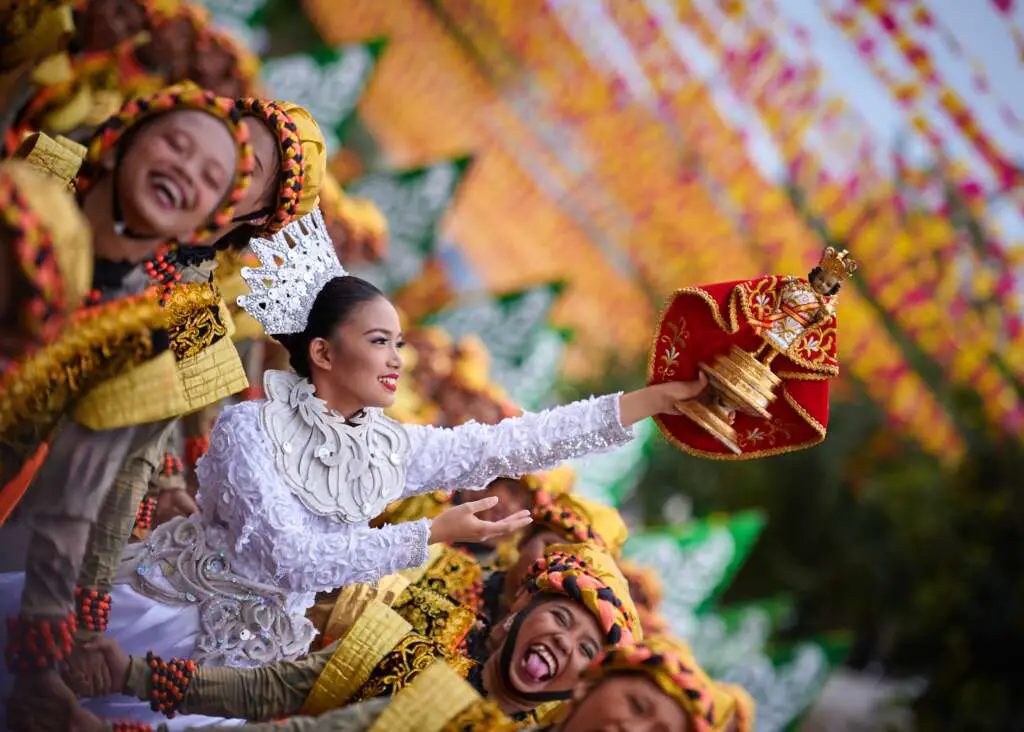
The Grand Parade: A Feast for Your Senses
Arguably one of the most-awaited events during Sinulog is its grand parade held on its last day. Dancers dressed in colorful costumes move gracefully along major streets while performing intricate steps to beat drums and gongs.
Some dancers carry Sto. Niño images adorned with flowers or other decorations.
To get a prime vantage point for watching this spectacle unfold, you can try to secure a spot near or along Osmeña Boulevard or at any point along General Maxilom Avenue up until Fuente Osmeña Circle where it ends.
If you’re looking for a more exclusive experience during this festive occasion, hotels like Radisson Blu Cebu offer packages that include breakfast buffets before witnessing colorful parades right outside their doorstep!
Other Events Worth Checking Out
Aside from watching the grand parade, there are plenty of other events that you can attend during the festival. One of them is the Fluvial Parade, which happens two days prior to the grand parade. In this event, devotees and dancers board boats and navigate through waterways while singing and dancing to the Sinulog beat.
Another event worth watching is the Sinulog Fireworks Competition held at SM City Cebu on January 18th. This competition pits various fireworks companies in a pyrotechnic duel, which culminates with a grand display of dazzling colors and patterns.
The Bottom Line
The Sinulog Festival is an amazing experience that should not be missed! With its rich history, vibrant culture, and lively festivities, it’s no wonder why it’s considered one of the country’s must-visit festivals.
Whether you’re a first-timer or a seasoned Sinulog-goer, this celebration will surely leave an indelible mark on your heart and mind. So come join in on the fun and let yourself be swept away by Cebu’s festive spirit!
2. Ati-Atihan Festival
The Meaning Behind the Festival’s Name
One of the most popular festivals in the Philippines is the Ati-atihan Festival. The word “ati-atihan” means “to be like Atis” or “make believe Atis.” The festival originally celebrated the arrival of 10 Malay datus (chieftains) and their families who fled from Borneo to escape persecution by Sultan Makatunaw. They landed on Panay Island, where they were welcomed by the locals led by Datu Marikudo, who gave them a settlement called Sinugbuhan.
The original inhabitants of Panay Island were known as Atis, a dark-skinned Negrito ethnic group. The festival thus evolved to honor and celebrate their culture and traditions.
Traditional Costumes and Dances Performed During the Event
The highlight of Ati-atihan is the street dancing competition, where participants dress up in colorful costumes adorned with feathers, beads, and shells. The dancers paint their faces black using charcoal or soot to resemble the original inhabitants of Panay Island. The dance steps are simple but energetic: participants move to drumbeats while chanting “Hala Bira!” or “Viva kay Santo Niño!” Santo Niño (Holy Child) is also venerated during this festival because it coincides with the Feast of Sto.
Niño de Cebu. Aside from street dancing, there are also parades showcasing religious images such as Jesus Christ and Virgin Mary carried on decorated carriages or floats.
Must-Do Activities During Ati-atihan
Apart from watching street dancing performances and parades, there are other activities that visitors can do during Ati-atihan:
1. Attend religious ceremonies – Masses are held throughout the weeklong celebration in honor of Santo Niño.
2. Taste local delicacies – Food fairs are set up where visitors can try traditional dishes such as chicken inasal and pancit molo.
3. Shop for souvenirs – Handicrafts, accessories, and shirts with Ati-atihan designs are sold by vendors in the streets.
4. Join the party! After dark, the streets come alive with parties and concerts featuring local bands and DJs.
5. Visit nearby attractions – The island of Panay has many scenic spots worth visiting, such as the Islas de Gigantes, Nelly’s Garden, and Garin Farm Pilgrimage Resort.
Ati-atihan Festival is an exciting event that showcases the Philippines’ rich culture and history. It is a must-see for those who want to experience firsthand the vibrant spirit of Filipino fiestas.
3. Dinagyang Festival
The Dinagyang Festival is another popular festival in the Philippines that is celebrated annually on the fourth Sunday of January in Iloilo City, located in the Western Visayas region. This festival is distinct from the Sinulog and Ati-atihan festivals, although they share similarities. The term “Dinagyang” means “merrymaking,” which accurately describes this colorful and vibrant celebration.
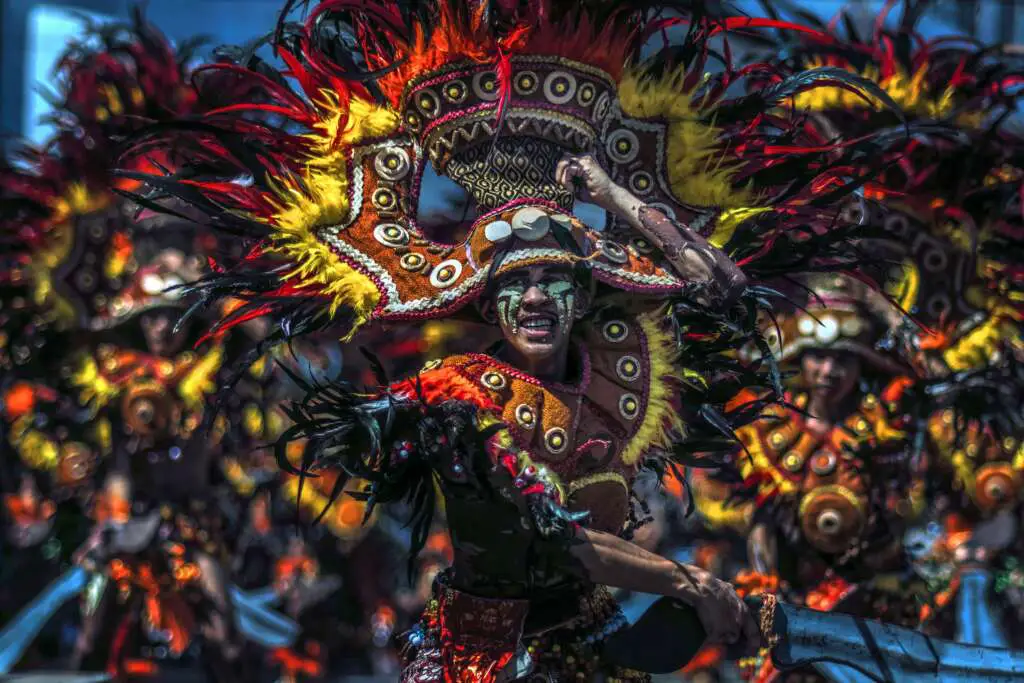
Similarities and Differences between Sinulog and Ati-Atihan
Like Sinulog and Ati-atihan, Dinagyang has deep religious roots. It celebrates the Santo Niño or the Holy Infant Jesus, just like many other festivals nationwide.
However, unlike these two festivals, Dinagyang combines elements of both religious solemnity and spontaneous revelry. Unlike Sinulog and Ati-atihan which last for a day or two, Dinagyang festivities span over four days filled with exciting events such as street dancing competitions, food fairs highlighting local cuisine, fashion shows featuring traditional costumes, live music performances showcasing local talents, beauty pageants crowning Miss Dinagyang winners from various barangays (neighborhoods), fluvial parades on Iloilo River to honor Señor Santo Niño de Cebu (Holy Child Jesus of Cebu), masses held at various churches around town.
Highlights of Dinagyang
The highlight of Dinagyang is its street dance competition held on Sunday at designated routes all over Iloilo City where different tribes compete to showcase their vibrant costumes with colorful feathers adorned by intricate beadwork designs while dancing to drum beats accompanied by indigenous instruments such as agongs(gong-like instrument)and tambourines (kettledrums). Another highlight of Dinagyang is its food fair, where visitors can sample local delicacies such as batchoy(noodle soup), pancit molo(minced pork wonton soup), and lechon (roast pig).
Apart from street dancing and food fairs, Dinagyang also has religious events. Early morning masses are held at the San Jose Parish Church to celebrate the Feast of Señor Santo Niño de Cebu, culminating in a grand procession of the Santo Niño statue around Iloilo City streets.
Insider Tips for Enjoying Dinagyang to Its Fullest
To fully enjoy Dinagyang, visitors should invest in comfortable shoes since most events require walking through crowds and streets. They should also bring sunscreen and hats since it’s usually sunny during this time of year.
Visitors should also dress appropriately; light clothing is recommended since temperatures can be humid. For foodies, market tours are available to sample local cuisines like Pinoy breakfasts such as tapsilog (beef tapa with garlic rice and egg) or seafood dishes like grilled squid served with soy sauce and calamansi (local citrus fruit).
Don’t forget your camera or smartphone to capture moments you want to remember! From the colorful costumes to the lively street performances filled with energetic dancers, there’s always something new waiting around each corner during Dinagyang Festival.
4. Panagbenga (Baguio Flower Festival)
Baguio City’s Annual Flower Festival
If you’re a flower enthusiast, then you definitely wouldn’t want to miss the annual Panagbenga Festival in Baguio City. Dubbed the “flower festival,” this event has been attracting both local and foreign tourists since its inception in 1995. The word “Panagbenga” is a Kankanaey term that means “season of blooming”.
The festival features a month-long celebration where the streets of Baguio City are lined with beautiful flowers, from roses to chrysanthemums and even sunflowers. Aside from showcasing different types of flora, various cultural events take place during the festival such as street dancing, music performances, and food fairs.
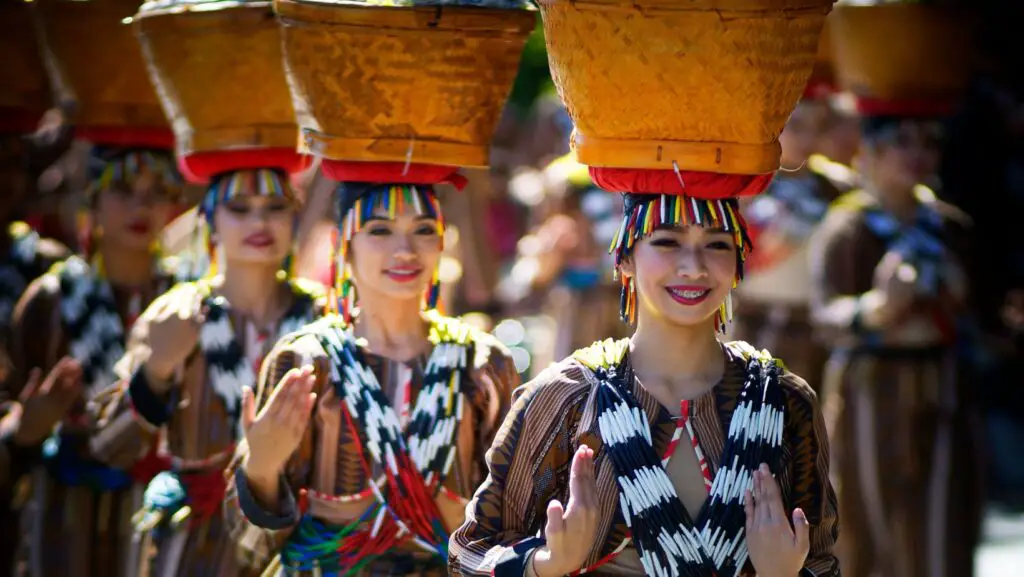
Highlights such as Floral Floats, Street Dancing, and Fireworks Display
One of the main attractions of Panagbenga is its grand street parade where participants wear colorful costumes adorned with flowers. The highlight of the parade is undeniably the floral floats that are decorated with intricate designs made entirely out of flowers.
In addition to this, visitors can also take part in various activities such as flower arranging contests and garden shows. If you’re into photography, make sure to bring your camera because there will be plenty of photo opportunities during this time.
To cap off each day’s festivities, there will be a fireworks display that illuminates the night sky over Baguio City. It’s definitely a sight worth seeing!
Best Time to Visit Baguio for Panagbenga
The best time to visit Baguio for Panagbenga is during its peak season which typically falls on the last week of February up until early March. During this period, most hotels within the city are fully booked so make sure to book your accommodations in advance.
The climate during this time is also at its best, with the temperature ranging from 12 to 25 degrees Celsius. It’s perfect for those who want to escape the sweltering heat of Manila and experience a cooler climate.
If you’re looking for something different this festival season, head over to Baguio City and witness the beauty of the Panagbenga Festival for yourself. With its colorful floats, elaborate costumes, and stunning floral displays, it’s an event worth traveling for!
5. Kadayawan sa Davao
Celebration of Diversity and Abundance in Davao City
If you want to experience a celebration that highlights the bountiful harvests and diverse cultures of the southern Philippines, then Kadayawan sa Davao is a festival you should attend. Held every third week of August in Davao City, this event is a colorful and vibrant showcase of the region’s rich cultural heritage and agricultural bounty.
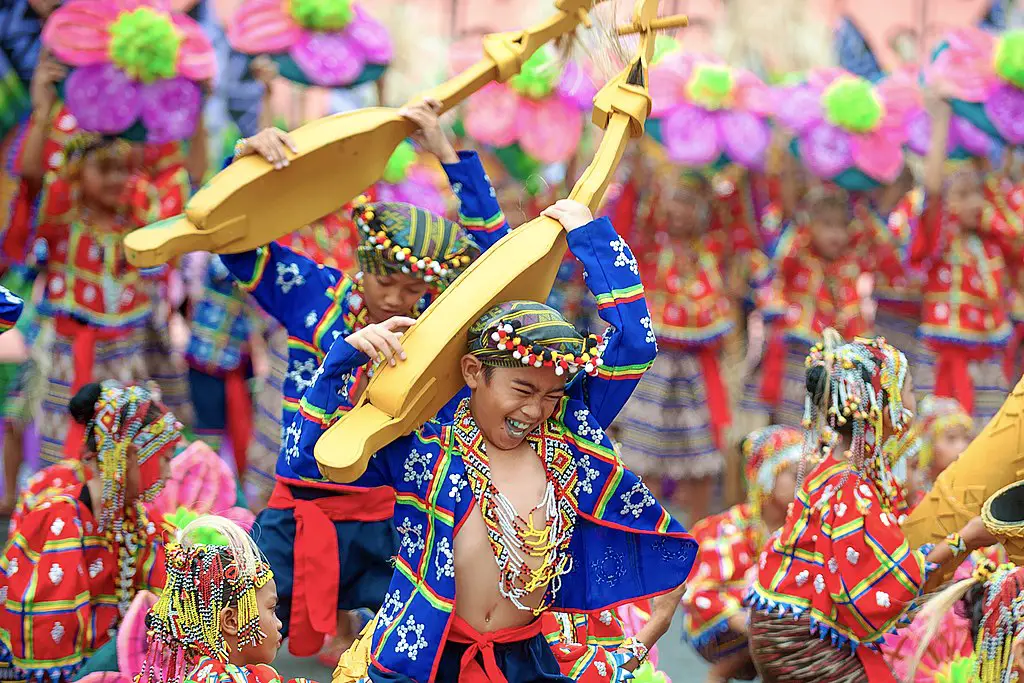
Indigenous Tribal Gatherings
One of the unique events during Kadayawan is the “Indak-Indak Sa Kadalanan” or street dancing parade, where various indigenous tribes from all over Mindanao come together to perform their traditional dances and music. You will see performers adorned in intricate costumes made from indigenous materials such as abaca, bamboo, and feathers.
Aside from the street dancing parade, other activities during Kadayawan showcase the different tribal cultures in Mindanao. These include tribal games, music competitions using traditional instruments like kulintang (a set of gongs), and workshops on traditional crafts like weaving and beadwork.
Fruit Displays and Floral Arrangement Contests
Kadayawan is also known for its “Pamulak sa Kadayawan,” which is a grand parade featuring spectacular floral floats showcasing fruits that grow abundantly in Mindanao such as durian, pomelo, mangoes, and bananas – just to name a few. After the parade comes an exhibit where these fruit displays are showcased for everyone to see. Another activity during Kadayawan that highlights Mindanao’s agricultural abundance is “Hulagway sa Kadayawan,” which means “Images of Kadayawan.” It’s a floral arrangement contest featuring flowers native to Mindanao such as waling-waling orchids, birds of paradise, and other exotic blooms.
Practical Information for Attending Kadayawan sa Davao
If you are planning to attend Kadayawan, be prepared for a huge crowd as it attracts thousands of visitors from all over the world. Book your accommodations and flights in advance. The festival lasts for one week so make sure you have enough time to explore the city.
Moreover, Davao City also has a lot of attractions that you can visit during your stay such as the Philippine Eagle Center, Mount Apo, and Eden Nature Park to name a few. Don’t forget to try out some of Mindanao’s delicious food such as grilled tuna belly or kinilaw na isda (raw fish salad).
Conclusion
The Philippines may be a small country but it is rich in culture and traditions that are celebrated throughout the year. Attending festivals like Sinulog, Ati-Atihan, Dinagyang, Panagbenga, and Kadayawan is not just about having fun – it’s about immersing oneself in Filipino culture and traditions that have been passed down through generations. These festivals provide opportunities to experience Philippine history and culture first-hand while mingling with locals who are happy to share their stories with foreigners.
Remember that each festival has its unique character so make sure you choose one that suits your interests best. Hopefully, this article has given you a glimpse into the vibrant world of Philippine festivals and inspires you to attend at least one of them in your lifetime!
Related Posts
-
Panagbenga Festival 2024 Calendar: A Symphony of Tradition and Innovation in Baguio City
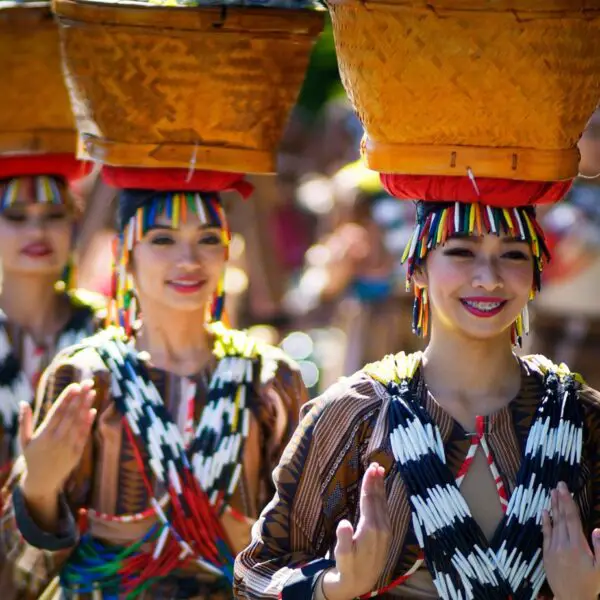
Prepare to immerse yourself in the lively and vibrant atmosphere of Baguio City as you participate in the Panagbenga Festival 2024. This eagerly-awaited annual event is a perfect blend of the city’s rich cultural heritage and modern creativity, showcasing the essence and identity of Baguio in a colorful symphony of experiences. You’ll be captivated by
-
Sinulog 2024 Calendar: A Comprehensive Guide to the Ultimate Festivities in Cebu
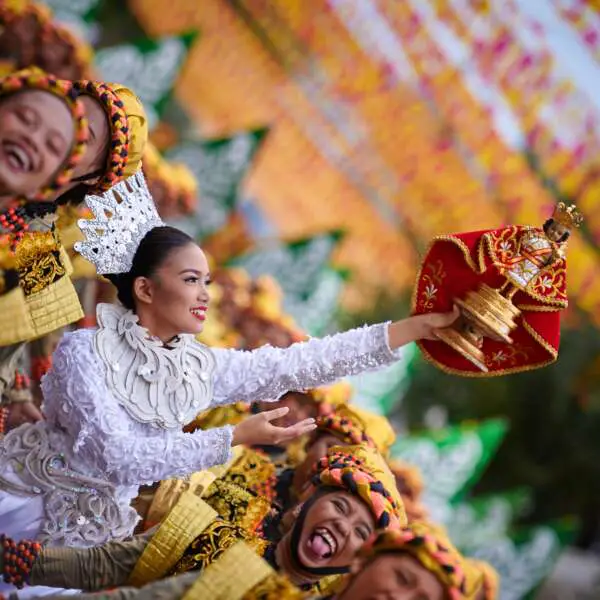
Through its renowned Sinulog Festival, Cebu City welcomes the New Year with a burst of colors, rhythm, and tradition. This annual event, celebrated throughout January, showcases the vibrant spirit and rich cultural heritage of the Cebuanos. Through this organized list, let’s dive into the ultimate festivities happening this January in Cebu. January 5, 2024 January
-
Experience the Giant Lantern Festival in San Fernando Pampanga
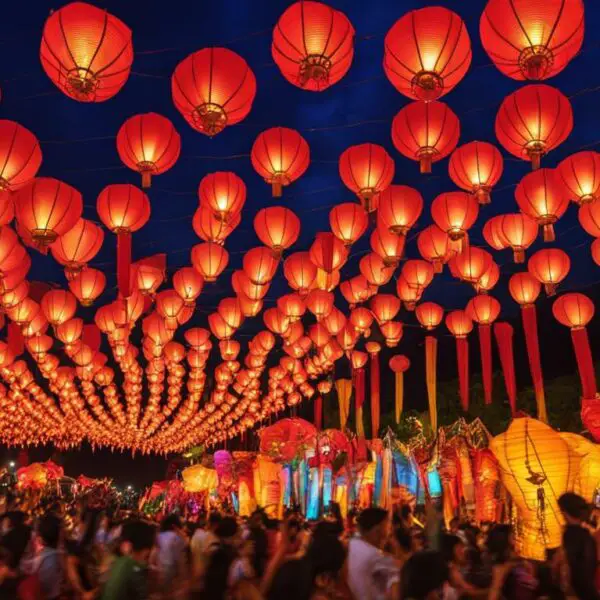
The Giant Lantern Festival in San Fernando Pampanga is a dazzling celebration of Filipino culture during the Christmas season. This annual event, also known as Ligligan Parul, showcases the creativity and unity of the local community through a competition of giant parol lanterns. The lanterns, made using various materials such as bamboo, Japanese paper, metal,
-
Discover the Vibrant Beauty of the Kahumayan Festival!
The Kahumayan Festival is a vibrant celebration that showcases the rich culture and traditions of the local community. This annual event brings together locals and visitors alike to experience the colorful and joyous festivities that have been passed down through generations. Key Takeaways: Experience the vibrant beauty of the Kahumayan Festival, a celebration of rich
-
Experience the vibrant Peñafrancia Festival in the Philippines.
The Peñafrancia Festival is a vibrant celebration held annually in the Philippines, showcasing the rich culture and traditions of the region. This lively event pays homage to Our Lady of Peñafrancia, a revered patron saint, and brings together locals and tourists alike in a colorful and joyous extravaganza. Key Takeaways: The Peñafrancia Festival is a
-
Dive into Flavor at the Vibrant Bicol Food Festival
The Bicol Food Festival in the beautiful region of Bicol in the Philippines is a must-visit event for food lovers seeking an explosion of flavor. Bicolano cuisine, known for its spicy and scrumptious dishes, offers a unique culinary experience that will tantalize your taste buds. From the fiery heat of chili peppers to the creamy
-
Experience the Vibrant Gigantes Festival of Lucban Quezon!
The Gigantes Festival of Lucban, Quezon is a vibrant celebration that offers a fascinating glimpse into the cultural richness of the region. Held annually on August 19, this festival showcases papier-mâché caricatures, known as higantes, that stand around 14 feet tall. These larger-than-life figures, dressed in traditional clothing, are carried on the shoulders of people
-
Celebrate the Vibrant Kadayawan Festival in the Philippines
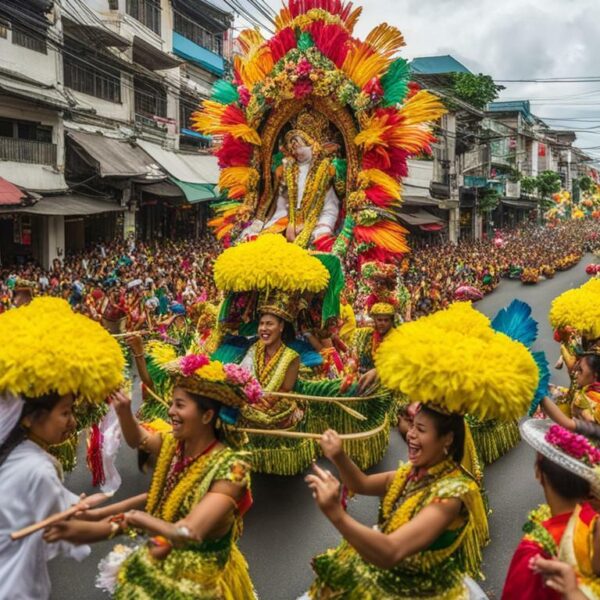
The Kadayawan Festival in Davao City, Philippines allows visitors to experience the vibrant cultural richness and traditional festivity of the region. This annual celebration showcases the unique heritage and traditions of Davao City, inviting people from all over the world to join in the festivities and immerse themselves in the rich cultural tapestry of this
-
Experience the Intriguing Pagoda Festival in Bocaue Bulacan
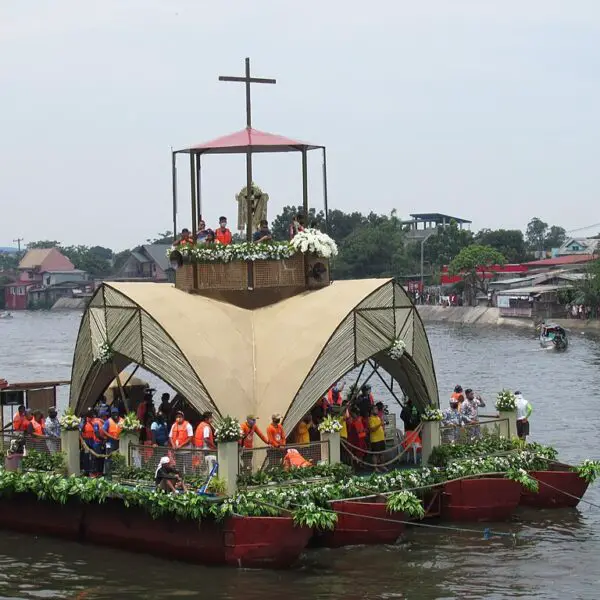
The Pagoda Festival in Bocaue Bulacan is an annual religious celebration that showcases the vibrant culture and traditions of the region. This captivating event takes place every first Sunday of July and is dedicated to the Holy Cross of Wawa. With its fluvial procession and festive atmosphere, the Pagoda Festival offers a unique and immersive
-
Experience the Vibrant Color and History at Sandugo Festival
The Sandugo Festival is an annual historical celebration that takes place in Tagbilaran City, Bohol, showcasing vibrant colors and rich history. This festival commemorates the Treaty of Friendship between Datu Sikatuna and Spanish conquistador Miguel López de Legazpi in 1565. It has since evolved into a month-long extravaganza, drawing visitors from around the world to
-
Experience the Colorful Tradition at Lami-Lamihan Festival
The Lami-Lamihan Festival is an annual celebration in Lamitan City, Basilan that showcases the rich cultural heritage of the Yakan community and promotes cultural harmony among different ethnic groups. Derived from the Yakan word “merry making,” this vibrant festival has become a significant event that unites the Yakan, Tausug, and Christian communities in Lamitan City.
-
Experience the Vibrant Pinyasan Festival
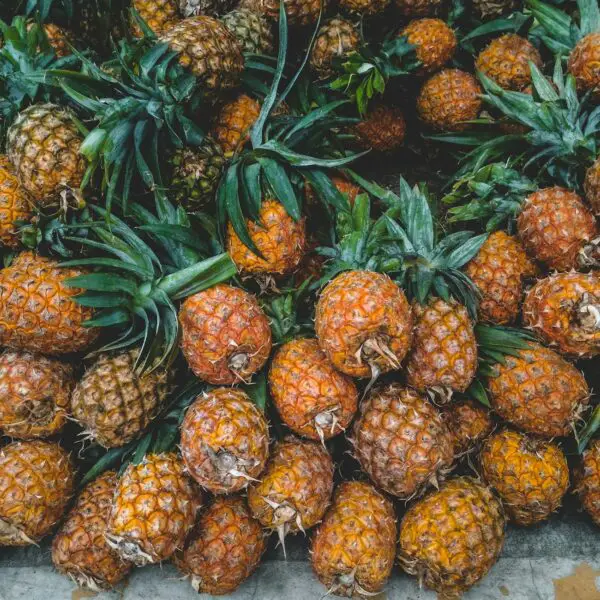
The Pinyasan Festival is a vibrant and culturally significant event that takes place in Camarines Norte, Philippines. This annual festival showcases the region’s rich cultural heritage and pays homage to the hardworking pineapple farmers of the area. With its sports competitions, cultural shows, street-dancing contests, and a delightful food fair, the Pinyasan Festival is a
-
Celebrating Camiguin: The Hibok-Hibok Festival Experience
The Hibok-Hibok Festival in Camiguin is a vibrant celebration that embodies the resilience, history, and rich traditions of the province. This annual festival, which returned in June 2022 after a two-year hiatus caused by the COVID-19 pandemic, showcases the cultural vibrancy and spirit of the people of Camiguin. With its array of activities, events, and
-
Experience the Vibrant Traditions at the Obando Festival
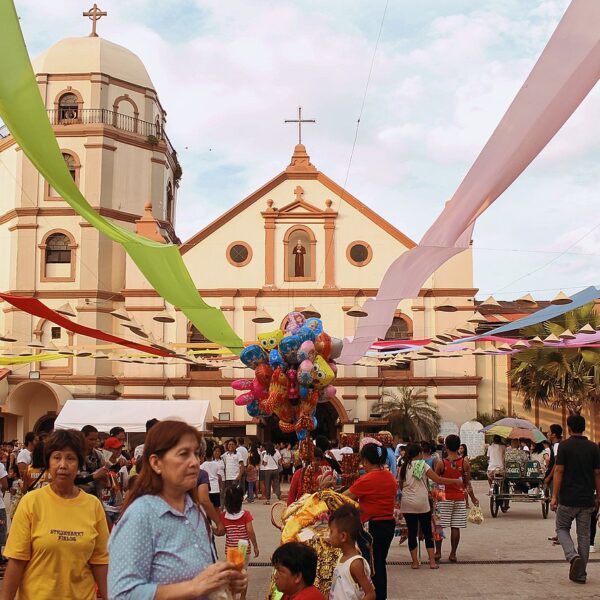
The Obando Festival in the Philippines is a vibrant celebration that combines ancient Anitist rituals with Catholic traditions. Held annually in Obando, Bulacan every May, this cultural celebration honors the town’s three patron saints: San Pascual, Santa Clara, and Nuestra Señora de Salambáo. The festival has a rich history and has been revived and celebrated
-
Experience the Vibrant Colors of Pahiyas Festival Today!
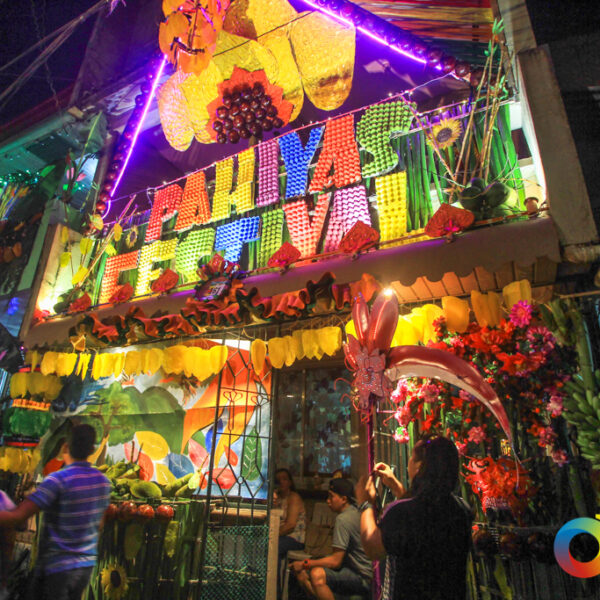
The Pahiyas Festival in Lucban, Philippines, is a vibrant celebration of art, food, and faith, showcasing the rich cultural heritage of the region. This amazing harvest festival takes place on May 15th every year and is dedicated to Saint Isidore the Farm Labourer, the patron saint of peasants and farmers. During the Pahiyas Festival, the
-
Experience the Colorful Fiesta of Flores de Mayo in May!
Flores de Mayo is a vibrant and colorful fiesta celebrated in the Philippines during the month of May, showcasing the rich cultural heritage of the Filipino people. This lively festival is a celebration of May devotions to the Blessed Virgin Mary and holds both religious and cultural significance. Participants engage in various devotional practices such
-
Experience the Unique Moriones Festival in the Philippines
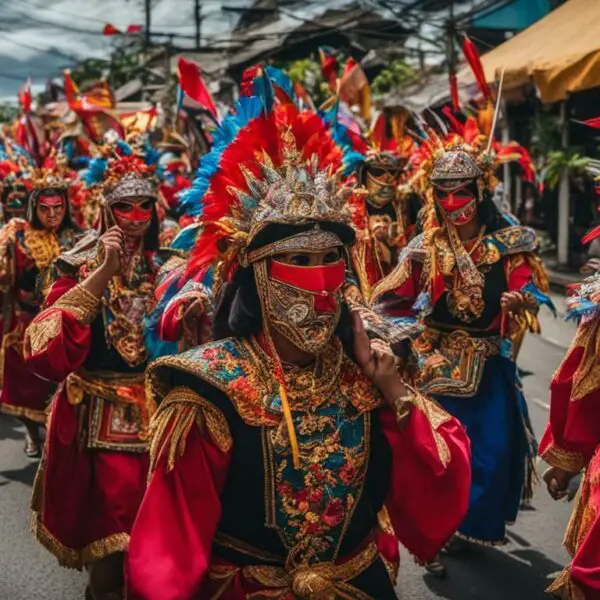
The Moriones Festival, celebrated annually in the Philippines, is a unique and vibrant religious event. It takes place during Holy Week in the province of Marinduque and attracts locals and tourists alike. The festival is characterized by the participants wearing intricately crafted masks and costumes depicting Roman soldiers called “Moriones.” With deep roots in the
-
Experience the Fun at the Colorful Alimango Festival
The Alimango Festival in Lala, Lanao del Norte, Philippines is an annual celebration of the town’s abundant crab industry, particularly mud crabs. Held every March, the festival features various activities such as a street dance competition, grand parade, crab race, crab catching contest, cooking contest, trade fair, and mangrove planting. Visitors can also sample local
-
Experience the Vibrant Paraw Regatta Festival!
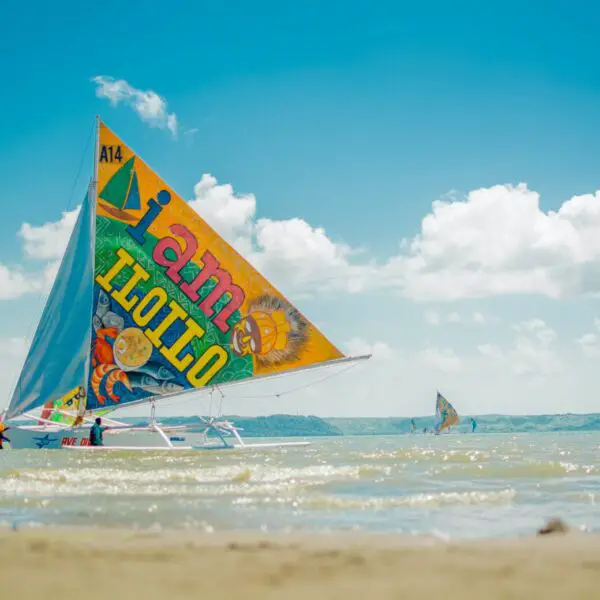
The Paraw Regatta Festival in Iloilo City is a captivating celebration of the region’s maritime heritage and vibrant culture. This annual festival brings together locals and tourists alike to experience the thrilling sailboat race, indulge in local delicacies, enjoy cultural performances, dance at street parties, and groove to live music. The festival also promotes environmental
-
Join the Excitement at the Hamaka Festival This Year!
The Hamaka Festival in Taytay, Rizal, Philippines is an event not to be missed this year. This annual festival celebrates the vibrant culture of the region, offering a unique experience filled with live music, traditional dances, theater performances, art exhibits, cultural workshops, and more. Immerse yourself in the lively atmosphere and indulge in delicious local
-
Experience the Vibrant Colors of Panagbenga Festival in the Philippines

Experience the vibrant colors of the Panagbenga Festival in Baguio City, Philippines. This month-long celebration, known as the “Flower Festival,” showcases the abundance of blooming flowers and the rich culture of the Cordillera region. The festival features a grand parade with stunning flower floats, dancers in elaborate costumes, and lively street performances. It also includes
-
Experience the Colorful Dinagyang Festival in the Philippines
The Dinagyang Festival is a grand and internationally recognized celebration held in Iloilo City, Philippines. The festival originated in 1968 when a replica of the image of Santa Niño de Cebu was given as a gift. Known as the “queen of all festivals” in the country, it showcases the complexity and diversity of Filipino culture.
-
Experience the Vibrant Ati-Atihan Festival in the Philippines
The Ati-Atihan Festival is a vibrant and colorful celebration in the Philippines that honors the Santo Niño. This lively festival takes place in Kalibo, Aklan, every third week of January and is a must-visit for anyone seeking an unforgettable cultural experience. The festival showcases the rich traditions and customs of Filipino culture, with its street
-
Experience the Colorful Spectacle of Regatta Lepa Festival!
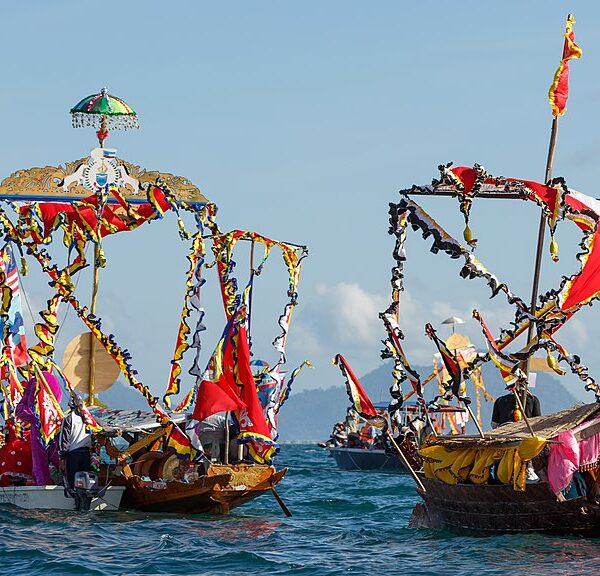
The Regatta Lepa Festival is an exciting and vibrant cultural event that showcases the rich heritage and traditions of the local community. Held annually in Semporna, Sabah, Malaysia, this colorful festival celebrates the art of boat-making and the cultural diversity of the region. Whether you’re a seasoned traveler or a first-time visitor, the Regatta Lepa
-
Experience the Vibrant Colors of the Sinulog Festival!

The Sinulog Festival in Cebu City, Philippines, is a vibrant celebration of culture and tradition. This annual religious and cultural event attracts millions of visitors from all over the country and the world. The festival revolves around the Santo Niño de Cebu, a statue of the baby Jesus that holds great religious significance. It was
-
Experience the Christmas Symbols Festival in Tangub City!
The Christmas Symbols Festival in Tangub City, located in Misamis Occidental, Philippines, is a vibrant and colorful celebration that attracts both local and foreign tourists. This festival is known for its festive atmosphere and unique displays, featuring life-sized replicas of famous landmarks and icons from around the world. Visitors can immerse themselves in the festive
-
Explore the Vibrant Pintaflores Festival in the Philippines!
The Pintaflores Festival is an annual celebration in San Carlos, Negros Occidental, Philippines that showcases the vibrant culture and traditions of the region. This lively event combines the beauty of flowers and the richness of tattoos, creating a unique and captivating experience for both locals and visitors. Key Takeaways: A Celebration of Flowers and Tradition
-
Experience the Thrilling Higantes Festival of Angono, Rizal.
The Higantes Festival of Angono, Rizal, is a vibrant celebration that showcases giant effigies, local culture, and a rich tradition. Held annually on November 22nd and 23rd, this festival is a tribute to San Clemente, the patron saint of fishermen. The highlight of the festival is the mesmerizing parade of Higantes, larger-than-life papier-mâché figures that
-
Join the Vibrant Catandungan Festival – A Philippine Delight
The Catandungan Festival in the Philippines is a week-long celebration that showcases the rich culture and traditions of the region. This vibrant festival is a must-attend event for anyone looking to immerse themselves in the beauty and bounty of Catanduanes province. From street dancing to parades and cultural performances, the Catandungan Festival offers a unique
-
Experience the Colorful Extravaganza of the Masskara Festival!
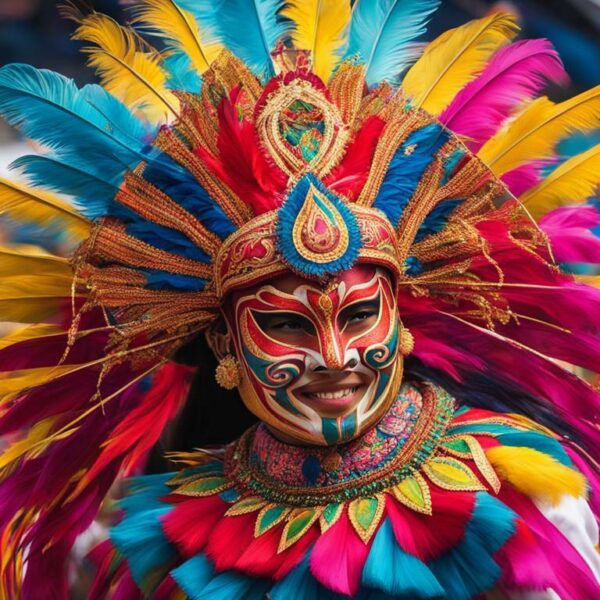
The Masskara Festival in Bacolod City, Philippines, is a vibrant celebration that showcases pulsating beats, masked dancers, and the rich Philippine culture. This annual festival, held every October, is one of the biggest festivals in the country and has become a symbol of Bacolod City’s resilience and positive spirit. So, get ready to immerse yourself